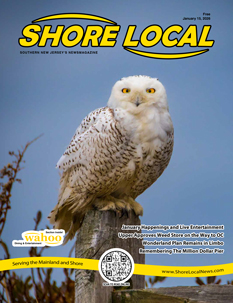Drink Up!
By David Setley
As the days get shorter, the breezes get cooler, and the leaves slowly begin to change, we will soon be exchanging our shorts and tees for jeans and sweaters. At this time of year, many of us seek out warm comfort foods and more savory seasonings. This week, I will feature some must-try wines for the fall season, along with foods that pair well with them.
Le vendange 2024 est arrivé! (“Vendange” is the French word for the wine harvest season). In many old-world countries, the exact date of the harvest is strictly controlled by the regional wine regulatory authorities to manage the consistent quality of the wines that come from that region. For most of the Northern Hemisphere, this can be as early as late August or as late as mid- to late October. It varies by region and varietal. In parts of California, this season can even extend into early November.
Thankfully, wine enthusiasts do not follow the same rules as fashion critics when it comes to avoiding whites after Labor Day. Although lighter whites, like Sauvignon Blanc or Pinot Grigio, may be put away, fuller-bodied white wines still have a place at the table in the fall and winter. If your dining plans include vegetable-based dishes (i.e. butternut squash soup, potato au gratin, or roasted Brussel sprouts), or meats using any of these herbs, consider pairing it with a Vouvray or a Chablis.
Vouvray is the region of the mid-Loire Valley where the thick-skinned white grape Chenin Blanc rules. Much like Sancerre, Muscadet, Chateauneuf du Pape and other appellations of France, this wine is known by its region’s name rather than the grape varietal. Though much of this grape is grown in the Loire Valley of France, it can also be found in South Africa and California. Wine made from Chenin Blanc grapes ranges from semi-sweet to sparkling. I love Vouvray wines! Most Vouvray wines are quite dry with flavors of stone fruits and the minerality of the limestone and silex that make up the soil of the region. It has the acidity you find in Riesling or Sauvignon Blanc but with the body of Chardonnay. Vouvray utilizes French oak barrels to age the wine, which imparts light wood notes on the palate. My wife and I were in France earlier this summer and visited the Vouvray region and discovered a great winery. Great news! We have been able to bring the same wine we tried into Passion Vines. Grab a bottle of Vigneau-Chevreau Cuvee Silex Vouvray, a traditional dry still wine, or try the Vigneau Selection Vouvray Sparkling Brut that is made in the same style as Champagne.
Chablis is also a wine region, located in the northern portion of Burgundy. The Chardonnay grape reigns there. Chardonnay is produced throughout the world but is most known by its French and California options. Unlike California Chards, Chablis wines do not have oaky or buttery flavors, due to the use of French oak barrels for aging. Chablis is very dry with a medium body and moderately high acidity. The flavors are mostly pear and green apple with notes of stone minerality. For a great example of this classic French white, try the Le Grand Chemin Chablis. Or, if you prefer the more buttery, oaky California version of this varietal, my recommendation for fall is the Raeburn Chardonnay from the Russian River Valley of Sonoma County. This award-winning wine is 100% Chardonnay and is grown using sustainable viticulture practices. The flavors are apple and nectarine with notes of vanilla and oak.
Despite these whites being quite appropriate for fall, you may prefer to pick up a bottle of red as the air gets cooler. If your culinary thoughts are moving to meatloaf, pot roast, sausages, or mushroom dishes, I’d encourage you to direct your wine thoughts to a Barbera from the Piedmont region of northern Italy. Barbera is the third most planted red grape in Italy after Sangiovese and Montepulciano D’Abruzzo. This grape produces a medium-bodied wine with a deep red color, rich dark fruit flavor, moderate acidity, and low-ish tannins. If you enjoy red wine but have a sensitivity to tannins, Barbera could be an option for you. Barbera wines are typically aged in oak barrels and have excellent dryness and light oaky notes. Barbera is an easy-drinking wine that goes wonderfully with traditional fall foods. Try the Viticoltore Mauro Molino Barbera D’Alba.
An equally easy-drinking red with lower tannins and a bit less acidity is the Corte Ottone Copertino Reserve from Puglia, aka the “heel” of the boot of Italy. This wonderful wine has a dark red color that belies the lower tannins. The flavor is delicious red berries and cherries with a velvety smooth mouthfeel and a long finish.
David Setley is enjoying his retirement from higher education as a wine educator and certified sommelier at Passion Vines in Somers Point, New Jersey.








